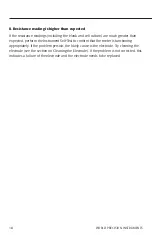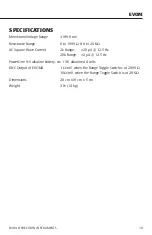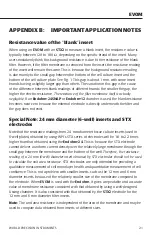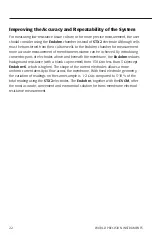
EVOM
WORLD PRECISION INSTRUMENTS 7
OPERATING INSTRUCTIONS
1. Connecting the electrode to the meter
Insert the telephone-type plug at the end of the flexible electrode cable into the
electrode port on the meter.
2. STX2 electrode preparation
•
For
resistance
measurement, the electrode can be used directly out of dry storage
without any preconditioning.
•
For
voltage
measurements, the electrodes need to be equilibrated to eliminate any
offset before use. Electrochemists have long used the following equilibration technique
to assure voltage stability and a low inter-electrode potential difference:
•
The
STX2
voltage electrode pairs are shorted together internally when they are
connected to the instrument and the instrument power switch is off. The user may
therefore immerse the electrode in electrolyte solution (
e.g.
, 0.1 – 0.15 M KCl) with
the electrodes connected to the
EVOM
(power off) to allow the probes to equilibrate.
With the voltage electrode connector pins thus short-circuited for several hours, the
asymmetrical potential difference across the two voltage electrodes is reduced. The inter-
electrode DC potential will be a few millivolts or less and quite stable. Table 1 lists the
recommended equilibration time before using the electrode.
•
Sterilize the electrodes, if desired. See section on Sterilization under Instrument
Maintenance.
Table 1: STX2 Electrode Equilibration Time
Electrode Condition
Equilibration Time
Never tested for voltage drift
24 hours
Stored dry
24 hours
Stored in solution
2 hours
3. Placement of the electrode in the sample cup
The
STX2
electrode is designed to facilitate measurements of membrane voltage and
resistance of cultured epithelia in tissue culture wells. The lengths of the electrodes
are unequal allowing the longer (external) electrode to touch the bottom of the dish
containing the external culture media while preventing the shorter (internal electrode)
from reaching the bottom of the tissue culture cup or insert (see Fig. 1). This feature
ensures proper positioning between the electrode and the cell layer in the cup during
the trans membrane measurement. In addition, by positioning the longer tip so that












































